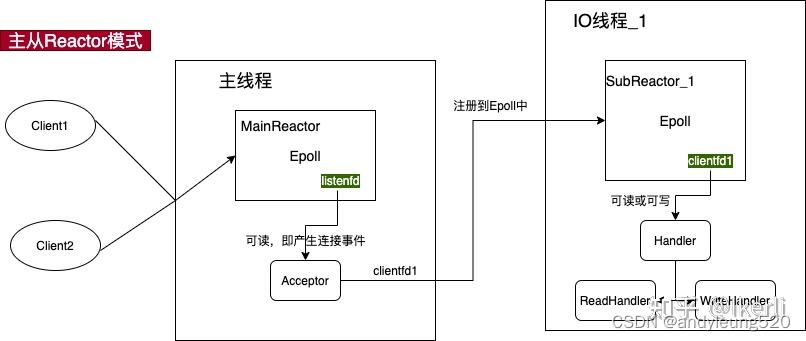4.5 分区表
分区表实际上就是将表中的数据以某种维度进行划分文件夹管理 ,当要查询数据的时候,根据维度直接加载对应文件夹下的数据! 不用加载整张表所有的数据再进行过滤, 从而提升处理数据的效率!
比如在一个学生表中想查询某一个年级的学生,如果不分区,需要在整个数据文件中全表扫描,但是分区后只需要查询对应分区的文件即可.
4.5.1 静态分区
所谓静态分区指的是分区的属性值是由用户在加载数据的时候手动指定的。
1.创建单分区表:
-- 创建学生表 分区字段为年级grade CREATE TABLE t_student (sid int,sname string) partitioned by(grade int) -- 指定分区字段 row format delimited fields terminated by ','; -- 注意∶分区字段不能是表中已经存在的字段,因为分区字段最终也会以虚拟字段的形式显示在表结构上。 select * from t_student; +----------------+------------------+------------------+ | t_student.sid | t_student.sname | t_student.grade | +----------------+------------------+------------------+ +----------------+------------------+------------------+
stu01.txt 1,zhangsan,1 2,lisi,1 3,wangwu,1 stu02.txt 4,zhaoliu,2 5,lvqi,2 6,maba,2 stu03.txt 7,liuyan,3 8,tangyan,3 9,jinlian,3
-- 静态分区需要用户手动加载数据 并指定分区 load data local inpath '/root/stu01.txt' into table t_student partition(grade=1); load data local inpath '/root/stu02.txt' into table t_student partition(grade=2); load data local inpath '/root/stu03.txt' into table t_student partition(grade=3); -- 查询 select * from t_student where grade=1; +----------------+------------------+------------------+ | t_student.sid | t_student.sname | t_student.grade | +----------------+------------------+------------------+ | 1 | zhangsan | 1 | | 2 | lisi | 1 | | 3 | wangwu | 1 | +----------------+------------------+------------------+
注意:文件中的数据放入到哪个分区下就属于当前分区的数据,即使数据有误,也会按照当前分区处理
stu03.txt 7,liuyan,3 8,tangyan,3 9,jinlian,3 10.aaa,4 load data local inpath '/root/stu03.txt' overwrite into table t_student partition(grade=3); select * from t_student where grade=3; -- 最后一条记录虽然写的是4 但是 放到了年级3分区下 效果也是年级3 +----------------+------------------+------------------+ | t_student.sid | t_student.sname | t_student.grade | +----------------+------------------+------------------+ | 7 | liuyan | 3 | | 8 | tangyan | 3 | | 9 | jinlian | 3 | | 10 | aaa | 3 | +----------------+------------------+------------------+
2.创建多分区表
-- 创建学生表 分区字段为年级grade 班级clazz CREATE TABLE t_student02 (sid int,sname string) partitioned by(grade int,clazz int) -- 指定分区字段 row format delimited fields terminated by ',';
1年级1班 stu0101.txt 1,zhangsan,1,1 2,lisi,1,1 1年级2班 stu0102.txt 3,wangwu,1,2 2年级1班 stu0201.txt 4,zhangsan,2,1 5,lisi,2,1 6,maba,2,1 3年级1班 stu0301.txt 7,liuyan,3,1 8,tangyan,3,1 3年级2班 9,dalang,3,2 10,jinlian,3,2
load data local inpath '/root/stu0101.txt' into table t_student02 partition(grade=1,clazz=1); load data local inpath '/root/stu0102.txt' into table t_student02 partition(grade=1,clazz=2); load data local inpath '/root/stu0201.txt' into table t_student02 partition(grade=2,clazz=1); load data local inpath '/root/stu0301.txt' into table t_student02 partition(grade=3,clazz=1); load data local inpath '/root/stu0302.txt' into table t_student02 partition(grade=3,clazz=2); select * from t_student02 where grade=1 and clazz=2; +------------------+--------------------+--------------------+--------------------+ | t_student02.sid | t_student02.sname | t_student02.grade | t_student02.clazz | +------------------+--------------------+--------------------+--------------------+ | 7 | liuyan | 3 | 1 | | 8 | tangyan | 3 | 1 | +------------------+--------------------+--------------------+--------------------+
注意:我们既然建立了分区,就要保证分区查询的的命中率,查询尽量使用设置的分区字段去查询.分区虽然避免了全表扫描,但是也可能会产生大量的小文件,有利有弊.
3.分区其他操作(了解)
-- 查看分区 show partitions t_student02; -- 添加分区 alter table t_student02 add partition (grade=4,clazz=1); -- 删除分区 alter table t_student02 drop partition (grade=4,clazz=1);
4.5.2 动态分区
静态分区与动态分区的主要区别在于静态分区是手动指定,而动态分区是通过数据来进行判断.
详细来说:静态分区需要我们自己手动load并指定分区,如果数据很多,那么是麻烦了.而动态分区指的是分区的字段值是基于查询结果(参数位置)自动推断出来的。核心语法就是insert+seclect。
开启动态分区首先要在hive会话中设置如下的参数
-- 临时设置 重新连接需要重新设置 set hive.exec.dynamic.partition=true; set hive.exec.dynamic.partition.mode=nonstrict;
其余参数配置如下:
设置为true表示开启动态分区的功能(默认为false) --hive.exec.dynamic.partition=true; 设置为nonstrict,表示允许所有分区都是动态的(默认为strict) 严格模式至少有一个静态分区 -- hive.exec.dynamic.partition.mode=nonstrict; 每个mapper或reducer可以创建的最大动态分区个数(默认为100) 比如:源数据中包含了一年的数据,即day字段有365个值,那么该参数就需要设置成大于365, 如果使用默认 值100,则会报错 --hive.exec.max.dynamic.partition.pernode=100; 一个动态分区创建可以创建的最大动态分区个数(默认值1000) --hive.exec.max.dynamic.partitions=1000; 全局可以创建的最大文件个数(默认值100000) --hive.exec.max.created.files=100000; 当有空分区产生时,是否抛出异常(默认false) -- hive.error.on.empty.partition=false;
操作步骤
-
创建文件并上传
-
创建外部表指向文件(相当于临时表)
-
创建动态分区表
-
查询外部表将数据动态存入分区表中
创建文件并上传 student.txt 1,zhangsan,1,1 2,lisi,1,1 3,wangwu,1,2 4,zhangsan,2,1 5,lisi,2,1 6,maba,2,1 7,liuyan,3,1 8,tangyan,3,1 9,dalang,3,2 10,jinlian,3,2 -- 将文件上传到hdfs根目录 hdfs dfs -put student.txt /stu
创建外部表指向文件(相当于临时表) create external table t_stu_e(sid int,sname string,grade int,clazz int )row format delimited fields terminated by "," location "/stu";
创建动态分区表 create table t_stu_d(sid int,sname string )partitioned by (grade int,clazz int) row format delimited fields terminated by ",";
查询外部表将数据动态存入分区表中 insert overwrite table t_stu_d partition (grade,clazz) select * from t_stu_e ; select * from t_stu_d;
4.6 分桶表
概述
分桶表也叫做桶表,叫法源自建表语法中bucket单词,是一种用于优化查询而设计的表类型。
分区提供一个隔离数据和优化查询的便利方式。不过,并非所有的数据集都可形成合理的分区。不合理的数据分区划分方式可能导致有的分区数据过多,而某些分区没有什么数据的尴尬情况 。分桶是将数据集分解为更容易管理的若干部分的另一种技术。
对Hive(Inceptor)表分桶可以将表中记录按分桶键(字段)的哈希值分散进多个文件中,这些小文件称为桶。桶以文件为单位管理数据!分区针对的是数据的存储路径;分桶针对的是数据文件。
分桶的原理
Hive采用对列值哈希,然后除以桶的个数求余的方式决定该条记录存放在哪个桶当中。
bucket num = hash_function(bucketing_column) mod num_buckets分隔编号 哈希方法(分桶字段) 取模 分桶的个数
分桶的好处
-
基于分桶字段查询时,减少全表扫描.
-
根据join的字段对表进行分桶操作,join时可以提高MR程序效率,减少笛卡尔积数量.
-
分桶表数据进行高效抽样.数据量大时,使用抽样数据估计和推断整体特性.
分桶表的创建
1.准备person.txt上传到hdfs 2.创建外部表指向person.txt 3.创建分桶表 4.查询外部表将数据加载到分桶表中
person.txt
public class Test02 {public static void main(String[] args) {for (int i = 1; i <= 10000; i++) {System.out.println(i + "," + "liuyan" + (new Random().nextInt(10000) + 10000));}}
}
hdfs dfs -mkdir /person
hdfs dfs -put person.txt /person
2.创建外部表指向person.txt create external table t_person_e(id int,pname string ) row format delimited fields terminated by ","location "/person"; select * from t_person_e;
create table t_person(id int,pname string )clustered by(id) sorted by (pname) into 24 buckets row format delimited fields terminated by ",";
insert overwrite table t_person select * from t_person_e ;
桶表抽样
-- tablesample是抽样语句,语法:TABLESAMPLE(BUCKET x OUT OF y) -- x表示从哪个bucket开始抽取。例如,table总bucket数为32,tablesample(bucket 3 out of 16)32 / 16 = 2 代表16桶为一组 抽取 第一组的第3桶 抽取第二组的第3桶 也就是第19桶 -- y必须是table总bucket数的倍数或者因子。hive根据y的大小,决定抽样的比例。tablesample(bucket 3 out of 64)32/64 = 2分之一 64桶为一组 不够一组 取第三桶的 前百分之50select * from t_person tablesample(bucket 4 out of 12); 24/12 抽取2桶数据 12桶一组 抽取 第一组第4桶 第二组 第4桶 4+12 =16桶





